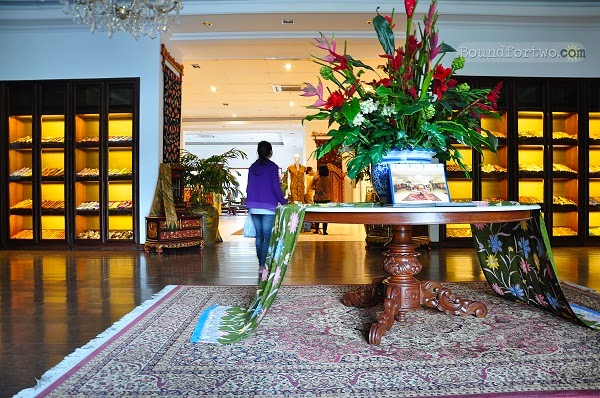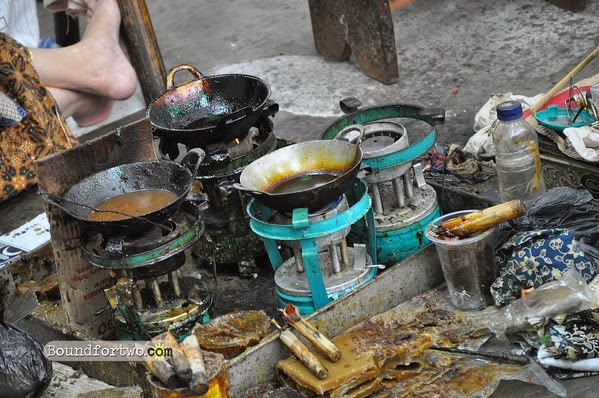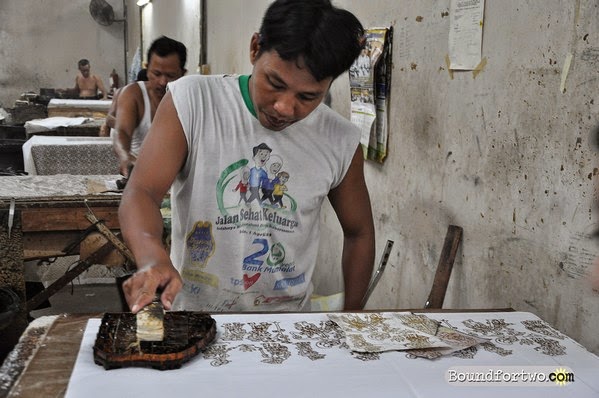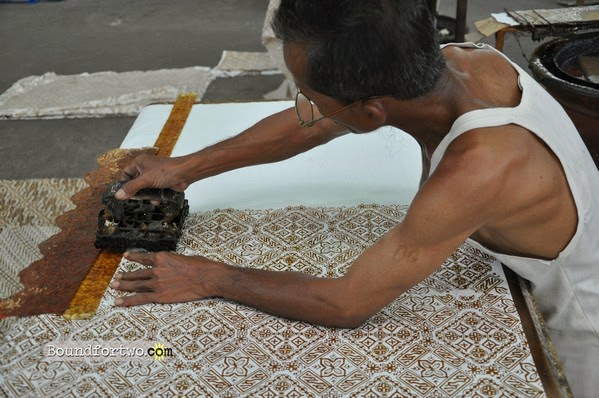13:00 03/04/2014 Our visit to Solo a year ago was brief and subtle. We’d speck of time to consume on this small city. Without a fixed itinerary we relied on asking residents of recommended place to visit. Instead we heard “nice batik here” from locals we randomly chat. Somehow we agreed on the claim. The kind of batik cloth they’re wearing were bit uncommon and say well fashioned. This triggered our curiosity to visit a Batik Museum. Why not? After all Surakarta is hailed as the batik capital of Indonesia.
We took a becak ride instead of meandering on our own. We’re clueless where the museum is and put our trust to our friendly driver. We arrived on the wrong destination, he probably misunderstood us. He asked someone who can point him the right spot. In less than 15 minutes we reached House of Danar Hadi.
Since we’re bit early until the museum will open, we roamed around the Batik Store. House of Danar Hadi is concept store famous for it’s high quality batiks which embodies the art and passion of the people of Surakarta.
We must say that people who entered this shop either sophisticated or truly admirers of the batik craft. The collection of batik here was pretty impressive. From fashionably women dresses to a simple men batik polo shirts and well tailored children clothes. Aside from clothing lines they got some nice crafts with a batik touch. We bought a nice purse of course made of batik and some souvenir items. We also paid 25,000 IDR/ each for Museum entrance at the cashier.
Danar Hadi Batik Museum
When the clock turned at 1PM local time, we’re ushered to the Museum. A bunch of staff greeted us with warm welcome and pleasant smile. A lady guide introduced herself as Ghea and toured us around the museum. Taking photos from cameras nor phones inside the museum are strictly prohibited, which we oblige. We’re curious why it is so, she said that most of the batiks showcased in the museum are trademarks of Danar Hadi and most of it are personal collections of the owner named Mr Santosa Doellah.
We learned so much of of Batik from our knowledgeable guide Ghea. She started narrating the history of Batik from Solo to neighboring city Yogyakarta, Chinese influence and during the Dutch colonization. Explaining the importance of geometrical patterns and its meaning whose wearing it. Tambal Pamiluto is a traditional batik pattern used to attract a person you love. It consists of 35 designs to signifies true devotion.
We’re so overwhelmed about batik’s history and all about it significance to Indonesian culture. Honestly museum visits are boring for some, but this tour in Danar Hadi was packed with all information that kept our mind occupied and interest to batiks. Ghea also showed us how the batik was made from scratch from the raw materials, until it get waxed, dyed and ready to use.
After 40 minutes of touring inside museum, Ghea brought us to the batik workshop. She lead us to the people who made the nice batiks of Danar Hadi.
Starting from the pattern sketchers who used pencils to trace the patterns to white cloth.
Then the cloth is passed on the ladies who manually waxed the patterned white cloth. It’s not as simple as you look at.
It takes focus, precision and lot’s of attention to details doing this task. With those needed attributes no wonder only women are assigned to it. With them are little burners and mini woks to melt those special waxes.
They’re also wielded with tjantings, a special instrument intended for applying hot wax in batik making.
While the men in the workshop were busy using their stamp plates to create unique patterns of Batik.
It looks so easy but it requires accuracy and strength to hard pressed the stamp. Each man wielded with different stamp plates and slight big burner for melting the wax.
Waxing the batik with stamp plates was quite fast and they could finish at least a handful in a day. In contrast to the ladies who finished the waxing for days or even weeks depending on the size of the cloth.
Then we proceed to the dye and washing area. It’s the second stage of making the batik after waxing the cloth. Wax resist and prevents dye penetrating the fabric. The process can be repeated multiple times which creates intricate multicolored designs.
After the dye process, the fabric are hang on the bamboo to air dry. Some fabrics will repeat the process until the correct batik pattern is achieved. To summarize the process > Wax >Dye > Rinse >Repeat >Iron. Sounds easy yet it’s complex.
Our museum tour ends with overwhelmed understanding of batik. It wouldn’t be possible if Ghea wasn’t around. We highly recommend to get her as a guide when touring Danar Hadi Museum. She’s very friendly and speaks good command of English.
If you want to know more about batik and it’s history, Danar Hadi Batik Museum is the place to go.
Visit their official site here.
Batik Lovers,
Summer and Sky

















